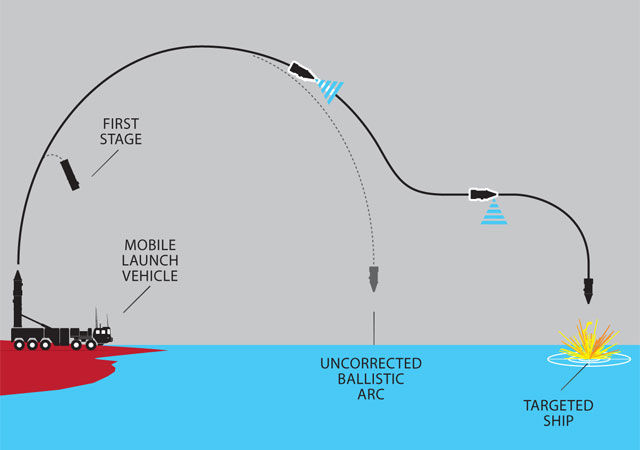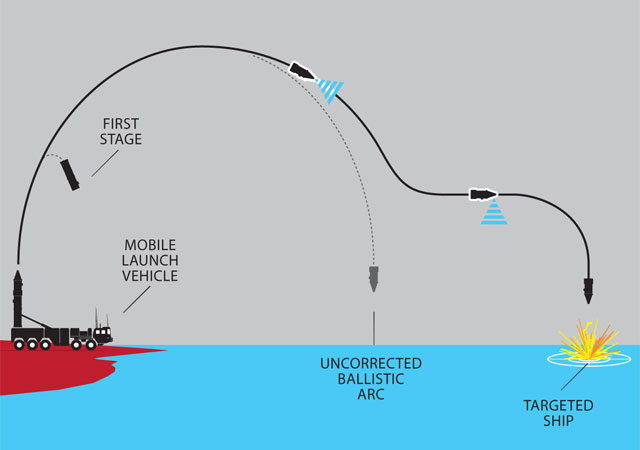In a recent article about the USS Nimitz and the 5th Fleet, describing why an aircraft carrier is always on the move I explained: “…..upon reaching a specific area of operations, the ship tends to keep it for several days, “orbiting” in international waters so as unpredictable as possible to avoid exposure to unlikely, but not impossible, extremely difficult long-range ballistic shootings “. In fact, when I wrote that text, I knew that China was developing the first ASBM (Anti-Ship Ballistic Missile) with a range of 3.000 kilometers and speed in excess of Mach 10 but didn’t know they were close to deploy it. I actually thought and still believe that, although most probably achieving the IOC (Initial Operational Capability), the DF21D (Dong Feng) “carrier killer” missile still has years of tests needed to tune its guidance system before it can be considered a real threat. Indeed, no over-water tests, required to evaluate the accuracy of the missile to pinpoint moving targets, has been announced or unveiled by intelligence sources. However, the ASBM threat has to be taken in proper consideration if “mobility” and “power projection” will remain the two key concepts behind the U.S. naval doctrine in the next few years. In the meanwhile Popular Mechanics provides some info about how the ASBMs work.
How it Works ASBM – China’s Antiship Ballistic Missile – Popular Mechanics.










